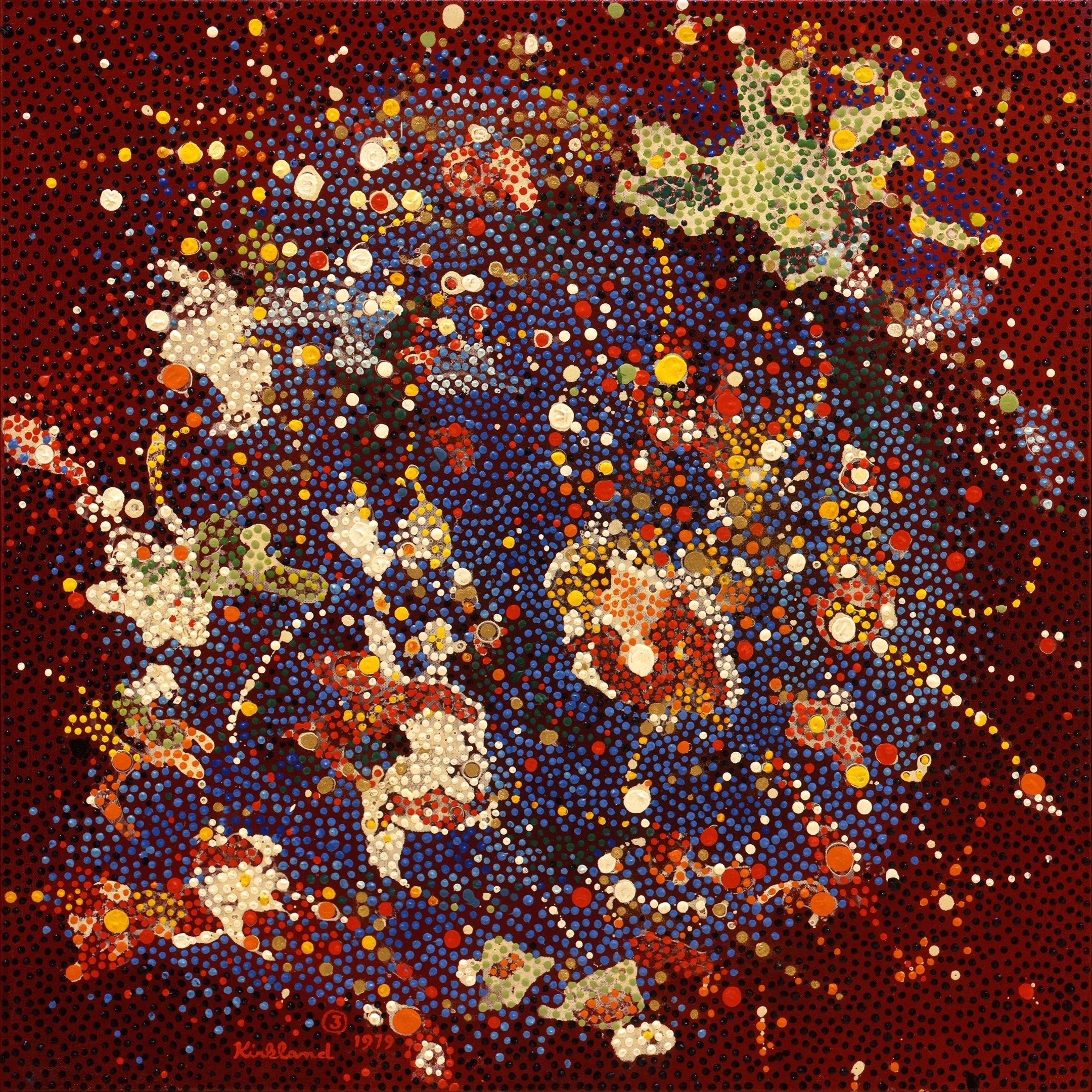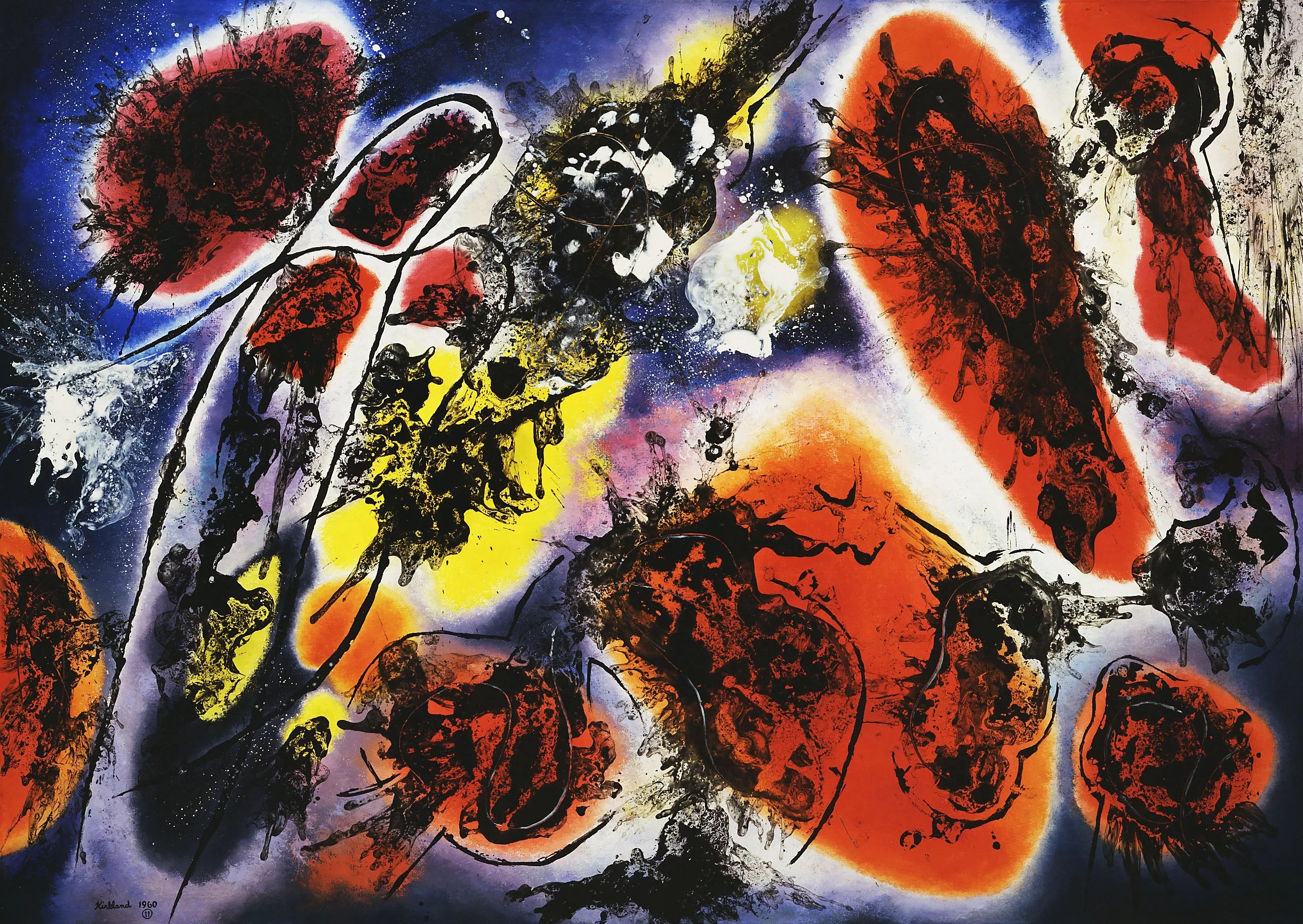
Kirkland Museum of Fine & Decorative Art, Denver

Audio By Carbonatix
Vance Kirkland might be Colorado’s most influential painter, but for Hugh Grant, founding director and curator of the Kirkland Museum of Fine & Decorative Art, the artist was also “Uncle Vance.” When Grant was thirteen, in 1958, he did whatever he could to work at Kirkland’s studio and art school at 13th Avenue and Pearl Street – rake leaves, take out the trash, cut the lawn, trim the bushes.
“My mother was in a relationship with Vance in probably about 1939, 1940,” Grant recalls. “And he proposed marriage to my mother, but she turned him down. My mother said, ‘You work all the time. You’ll never have any time for me.'”
Although Kirkland and Grant’s mother remained close friends, she was right: Kirkland’s life was his work, and vice versa. His ouevre may have comprised just 1,200 paintings – with still more being discovered – but Kirkland’s legacy is indelibly woven into the artistic landscape of Colorado through his work in education. “He founded three art schools by the time he was 28,” Grant notes.
Kirkland was born November 3, 1904, in Ohio, and attended the Cleveland School of Art. He came to Denver in 1929 as the founding director of the University of Denver’s School of Art. He also created the Kirkland School of Art, which operated from 1932 to 1946; starting in 1933, the school’s classes were accredited by the Denver extension of the University of Colorado. In 1946, Kirkland returned to DU, where he worked until his retirement in 1969. Through it all, he painted.
This year, make your gift count –
Invest in local news that matters.
Our work is funded by readers like you who make voluntary gifts because they value our work and want to see it continue. Make a contribution today to help us reach our $50,000 goal!
“He’s been an exceptional art ambassador for Colorado,” Grant says. “Kirkland’s works have been seen so far in seventeen museums and galleries in eleven foreign countries, and in over twenty states in over eighty museums, universities and galleries. So he’s carried the mantle of Colorado artists and given Colorado a certain amount of fame by doing that.”
Kirkland died in May 1981, and Grant became the executor of the artist’s estate. In 1996, he created the Kirkland Museum in the artist’s old studio; in April 2003, it opened to the public, exhibiting Kirkland’s works alongside those of other influential Colorado artists. In 2016, the museum moved to a new building at 1201 Bannock Street that incorporated the original three-room studio. Today the Kirkland Museum is known for its unique salon-like setting, in which decorative and visual artworks are displayed as they would be in a home. “There’s no other American museum I know of where one can have that experience,” Grant says. “And furthermore, our visitors from many states and countries don’t know of one, either. We’re unlike any other museum, and we’re sitting right here in Denver, Colorado.”
Now, for its twentieth anniversary, the Kirkland Museum has mounted a retrospective of Kirkland’s work, Vance Kirkland’s Cosmos.
And celebrating Kirkland’s art has been Grant’s life work.

“Creation of Space,” 1960, by Vance Kirkland (1904-1981, American), oil paint and water on linen.
Collection Kirkland Museum of Fine & Decorative Art, Denver
“Hugh had incredible foresight, keeping that estate together and keeping those paintings,” says the museum’s deputy curator, Christopher Herron. “Really, it was about promoting Vance and his artwork. And then that grew from there to show Vance’s contemporaries – other Colorado artists – so Hugh has really been a big proponent for Colorado art and Vance Kirkland’s artwork. And then he’s described to me as using the decorative arts as a hook, [because] maybe people weren’t interested enough to come see Colorado art by itself in a museum, but we can lure them in with this great design work, and show all this stuff together in a salon style and create an atmosphere that really promotes all of it.”
Visitors never tire of looking at Kirkland’s art, Grant says, because the artist’s aesthetic tenacity and rigorous experimental output kept him working outside the box. He moved from typical landscapes to surrealism, from watercolors to oils, from vibrant expressionism to radical modernism, all while oscillating between old painting methods, new painting methods and his own inventions.
“He was able to translate his totally unique, idiosyncratic visions by massively employing four different media,” Grant says, listing watercolors, oils, tempera and casein. “He transferred these visions into paintings. He developed 37 series in five major periods during his career of 55 years. Quite extraordinary.”
Kirkland began, as many artists do, with realism and regional landscape paintings before transitioning to surrealism. “He then moved into hard-edge abstractions and abstract expressionism,” Grant says, “and finally, his later dot paintings, representing energy in outer space.”
Kirkland began painting his cosmic musings in 1954, rendering images of explosions through textured works demonstrating intricate pointillism. Grant remembers Kirkland explaining the new direction with this: “I looked in front of me and did landscapes of clouds and mountains, and then I looked down at the ground and created these surrealist worlds. And then there was only one other direction for me to look: up. And so I looked up at the starry heavens, and I began to imagine my own cosmos.”
Painted before the space race – much less any Hubble images – Kirkland relied on his own imagination to create the dazzling series, in which oils fold over watercolors and impasto is tempered by the intricate, deliberate dots. Grant notes that for these paintings, “he developed three unique textures that had never been seen in art before.”
He did so by mixing watercolors with denatured alcohol, mixing oils with water and creating his individual dots. The techniques were similar to those employed by expressionist pioneers Paul Klee and Wassily Kandinsky, to whom Kirkland looked for inspiration, but taken to a more detailed level. And like those artists, Kirkland also imbued his works with musical polyphony, interpreting musical movements into paintings. Being a synesthete – a person whose senses interact with each other, such as seeing colors when hearing music – Kirkland had a leg up on paint translating sound.
As Herron and Grant were contemplating the museum’s upcoming twentieth anniversary, the idea for Vance Kirkland’s Cosmos emerged. They were discussing how each of Kirkland’s series appeared to fold out from the next, as if you were “zooming out” from a lens and discovering wider atmospheres. While they were pondering this transitive scope, Grant discovered that Kirkland had created yet another series he’d never seen before. That series, which they have named “Energy of Forms,” is on view for the first time in this exhibit.
“Chris had asked me to redo the core collection list of Kirkland’s paintings, which means that we try and decide on paintings we absolutely, hopefully never have to sell unless we just get an enormous amount of money,” Grant recalls. “I kept running across these paintings that had no explosion at the middle of his explosion series. I had noticed only two before.”
That was when Kirkland fell ill with fatal hepatitis from a bad blood transfusion. Grant helped set up a small studio in the artist’s hospital room so that he could continue painting. “He finished one entire painting in the hospital room, and he got about 60 percent through another,” Grant recalls. “And it didn’t have an explosion. I said, ‘Vance, you know, this doesn’t have an explosion.’ And he said, ‘Yes! This is the first formal one of my new series.’ And then he dies.”
Grant was unaware of five similar paintings that Kirkland had done in 1979; he just knew about these two. When he placed them together, he saw that they not only made up a series, but also represented a cosmic return to form for the painter.
“The ‘Forms’ paintings have no explosion, but they are incredibly charged with energy,” Grant explains. “They have congestion, spurts of energy – little dots coming out from the very complex shapes and forms. … Vance talked about the fact that they could be dissipating energy of a dying star, or building toward nuclear fusion giving birth to stars.
“I realized that, stunningly, those phenomena relate directly back to Kirkland’s nebulae paintings that he began in 1954,” Grant continues. “So they relate back to 25 years earlier, to his first series of outer-space paintings, because nebulae are the birthplaces of stars; they’ve been described as the nurseries of stars. So Kirkland has come full circle with this last period, and this is how important these paintings are. He’s managed to do a loop from his very last paintings back to his first paintings. And it’s stunning. And so I must say, if Kirkland’s career had to end, this is a brilliant way to do so. And in looking at these and analyzing them against Vance’s other paintings, I believe these are some of the most extraordinary works that he ever did.”
The exhibition is arranged both thematically and chronologically through various series, showcasing twenty paintings in total. And the “Energy of Forms” series isn’t the only fresh draw. “You know, in my eighteen years of working at the museum, there’s one in particular 1970s explosion that I used to see in storage downstairs and just marvel at,” Herron says. “And I always waited for the day that we could put it out on display. We picked some things out of the vaults like that, which we’re really excited to be able to show for the first time here at the museum.
“It’ll be striking, and I hope it’s inspirational to people,” he adds. “Because in these troubled times that we’re in, just immersing yourself in this sense of wonder and sense of imagination is a great thing.”
Vance Kirkland’s Cosmos is on view through May 28 at the Kirkland Museum of Fine & Decorative Art, 1201 Bannock Street. Get tickets, $12, and more information on the museum’s website.